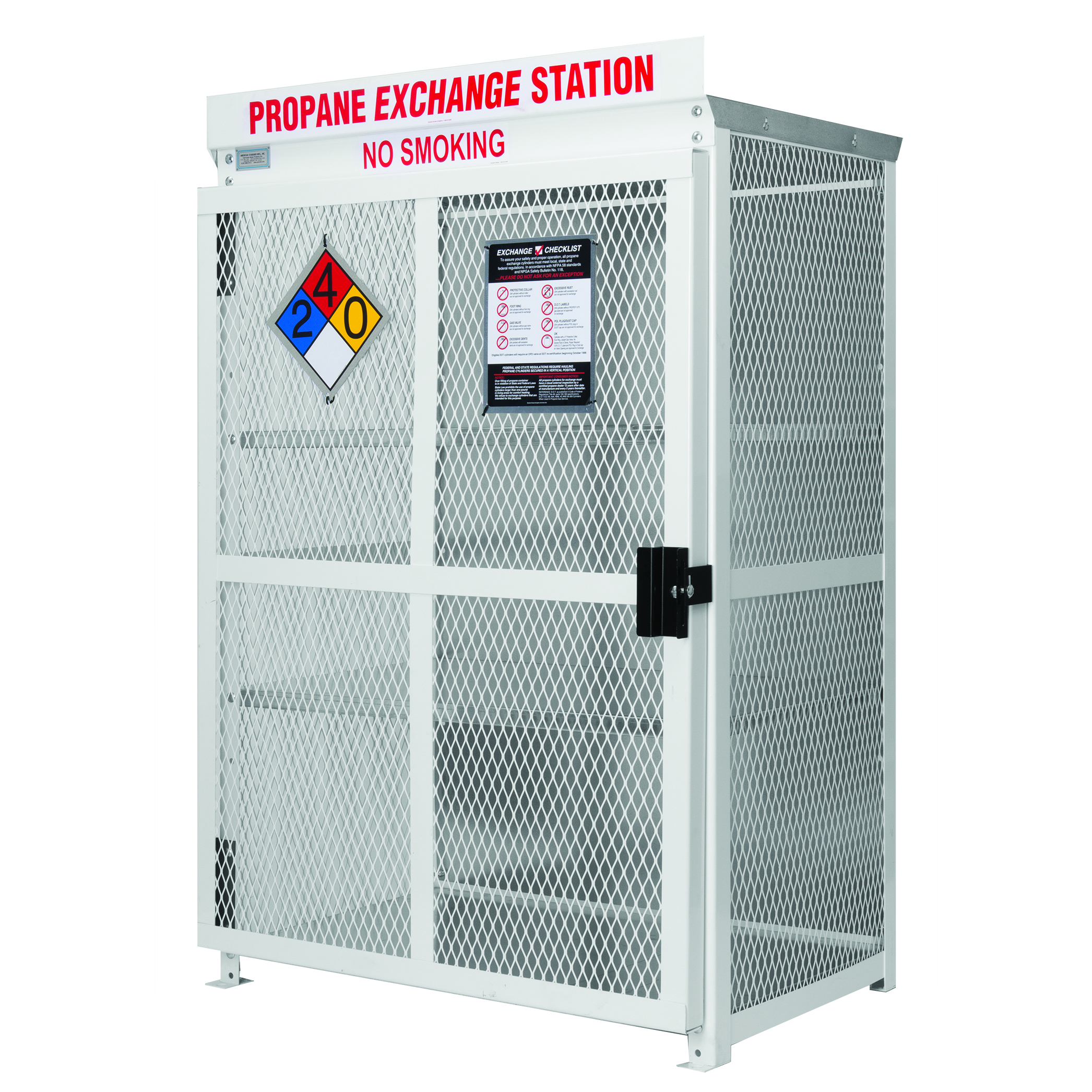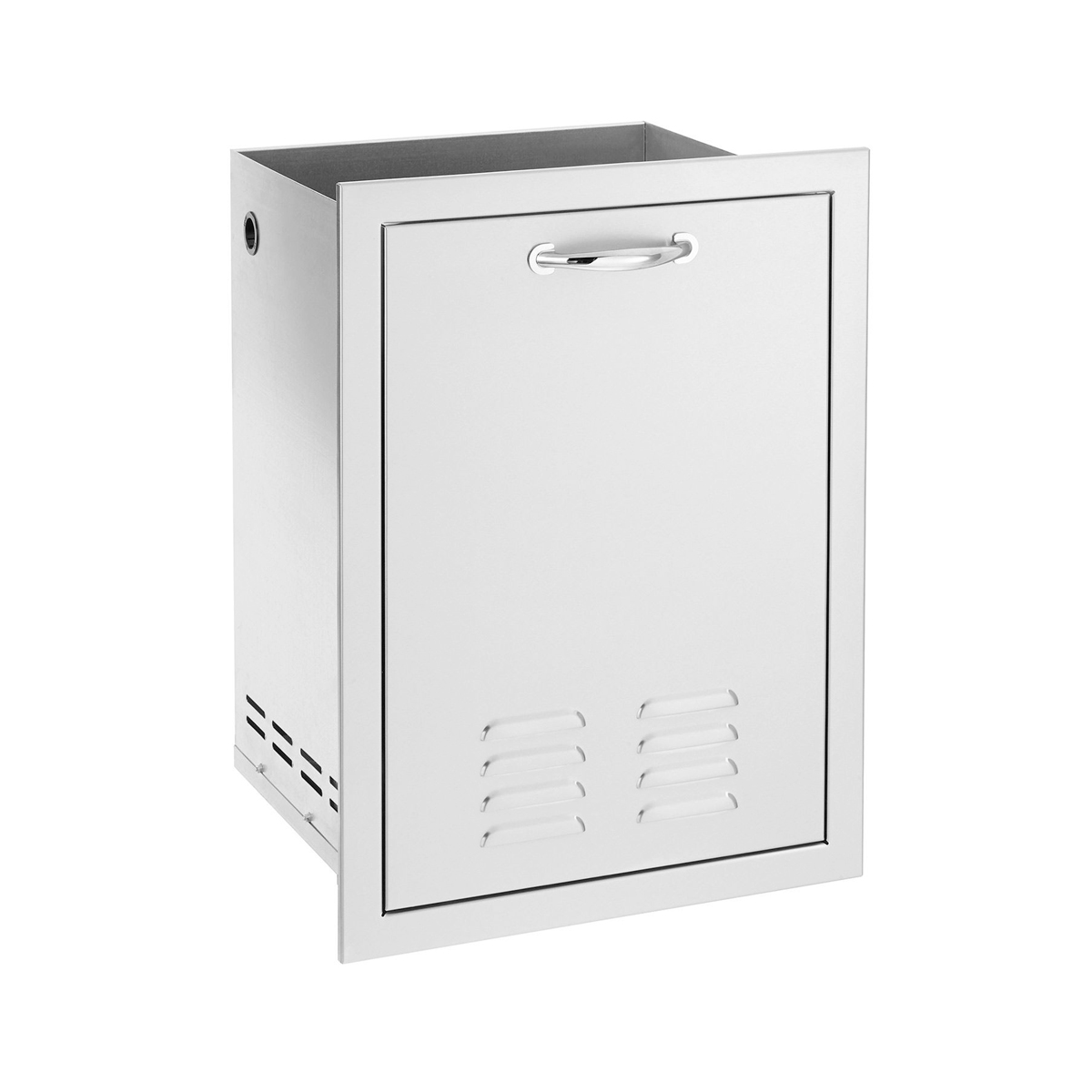Understanding LP Tank Storage Cabinets

LP tank storage cabinets are essential for safely storing and managing propane tanks, ensuring both user safety and compliance with regulations. These cabinets provide a secure and controlled environment for your propane tanks, minimizing potential hazards associated with improper storage.
Safety Features and Regulations
LP tank storage cabinets are designed with safety features that comply with industry standards and regulations. These features help prevent accidental leaks, fires, and explosions, ensuring a secure environment for both the user and the surrounding area.
- Ventilation: LP tank storage cabinets typically have ventilation systems that allow for proper air circulation, preventing the buildup of flammable propane gas.
- Fire Resistance: Many cabinets are constructed from fire-resistant materials to withstand high temperatures and minimize the risk of fire spread.
- Locking Mechanism: These cabinets often include locking mechanisms to prevent unauthorized access and tampering with the propane tanks.
- Leak Detection Systems: Some cabinets incorporate leak detection systems that alert users to potential gas leaks, allowing for prompt action to prevent accidents.
Types of LP Tank Storage Cabinets
LP tank storage cabinets come in various configurations to meet different needs and storage requirements. The type of cabinet you choose depends on factors such as the size of the tanks, the intended location, and your specific storage needs.
- Indoor Cabinets: These cabinets are designed for indoor use, typically in garages, basements, or other enclosed spaces. They offer protection from the elements and provide a secure storage solution within the home.
- Outdoor Cabinets: Outdoor cabinets are designed for placement in open areas, such as patios, decks, or yards. They are typically weather-resistant and can withstand harsh outdoor conditions.
- Wall-Mounted Cabinets: These cabinets are designed to be mounted on walls, saving space and providing a secure storage solution in tight areas. They are often ideal for small spaces or areas with limited floor space.
- Freestanding Cabinets: Freestanding cabinets are designed to stand independently on the ground. They offer greater flexibility in placement and are suitable for larger storage needs.
Choosing the Right LP Tank Storage Cabinet

Selecting the right LP tank storage cabinet is crucial for ensuring the safe and secure storage of your propane tanks. A well-chosen cabinet provides protection from the elements, minimizes the risk of accidental damage, and enhances overall safety. This section will guide you through the factors to consider when making your choice.
Tank Size and Fuel Type, Lp tank storage cabinet
The size of the LP tank you intend to store is a primary factor in determining the appropriate cabinet. Cabinets come in various sizes to accommodate tanks ranging from small 1-pound cylinders to large 100-gallon tanks. It is essential to select a cabinet that provides adequate space for your tank, allowing for easy access and maneuverability. Additionally, the type of fuel stored in the tank (e.g., propane, butane) may influence the cabinet’s requirements. For example, propane tanks require a cabinet with specific ventilation features to prevent the accumulation of flammable vapors.
Installation Location
The location where you plan to install the cabinet is another crucial consideration. Factors to assess include:
- Accessibility: Ensure the cabinet is placed in a readily accessible area, allowing for easy access to the tank for filling, inspection, and maintenance.
- Distance from Flammable Materials: The cabinet should be installed at a safe distance from any flammable materials or sources of ignition to prevent fire hazards.
- Weather Protection: Consider the cabinet’s ability to withstand harsh weather conditions, such as rain, snow, and extreme temperatures. A cabinet with a weatherproof design is essential for protecting the tank and preventing corrosion.
Cabinet Materials
LP tank storage cabinets are typically constructed from various materials, each with its own advantages and disadvantages:
Steel Cabinets
- Pros: Steel is a durable and robust material that offers excellent strength and resistance to impact. It is also relatively affordable and readily available.
- Cons: Steel can be susceptible to rust and corrosion, especially in humid environments. Proper maintenance, including regular painting or coating, is necessary to prevent rust formation.
Aluminum Cabinets
- Pros: Aluminum is lightweight, corrosion-resistant, and offers excellent thermal conductivity. It is also a good choice for areas with high humidity.
- Cons: Aluminum is less durable than steel and can be more expensive.
Plastic Cabinets
- Pros: Plastic cabinets are lightweight, corrosion-resistant, and often come in various colors to blend in with their surroundings. They are also relatively inexpensive.
- Cons: Plastic can be less durable than steel or aluminum and may be more susceptible to damage from impact or extreme temperatures.
Ventilation and Fire Safety Features
Ventilation is essential for LP tank storage cabinets to prevent the accumulation of flammable vapors. A well-ventilated cabinet allows for the safe dissipation of gases, reducing the risk of explosions. Look for cabinets with:
- Venting Ports: These ports allow for air circulation within the cabinet, preventing the buildup of flammable vapors.
- Flame Arrestors: These devices are designed to prevent the ignition of flammable vapors within the cabinet. They act as a barrier, preventing flames from entering the cabinet and igniting the vapors.
- Fire-Resistant Materials: Some cabinets are constructed from fire-resistant materials, providing an extra layer of protection in the event of a fire.
Installation and Maintenance

Proper installation and regular maintenance are crucial for ensuring the safe and efficient operation of your LP tank storage cabinet. By following the steps Artikeld below, you can minimize risks and maximize the lifespan of your cabinet.
Installation
Installation requires careful planning and adherence to safety guidelines.
- Choose a Suitable Location: Select a well-ventilated area, away from ignition sources, and with easy access for tank delivery and maintenance.
- Prepare the Site: Ensure the ground is level and firm. Clear any obstructions and provide adequate clearance around the cabinet for ventilation and access.
- Secure the Cabinet: Anchor the cabinet to the ground using concrete or bolts, depending on the manufacturer’s instructions.
- Connect the Tank: Install the LP tank securely within the cabinet, ensuring the connection is tight and leak-free.
- Install Ventilation: Ensure adequate ventilation to prevent the buildup of flammable gases.
- Test for Leaks: After installation, use a leak detection solution to check for any leaks at the connections and fittings.
Maintenance
Regular maintenance is essential for the safe operation of your LP tank storage cabinet.
- Cleaning: Periodically clean the cabinet, both inside and outside, to remove dust, debris, and potential hazards.
- Inspection: Regularly inspect the cabinet for signs of damage, corrosion, or wear and tear. Check the tank connection, hoses, and fittings for leaks.
- Leak Testing: Conduct regular leak tests, following the manufacturer’s instructions. Use a leak detection solution or electronic leak detectors.
- Ventilation: Maintain adequate ventilation by ensuring the vent openings are clear and unobstructed.
Ventilation and Leak Detection
Proper ventilation and leak detection systems are crucial for a safe LP storage environment.
- Ventilation: Ventilation prevents the buildup of flammable gases, reducing the risk of explosions or fires. Proper ventilation systems should be designed to draw air from the cabinet and release it safely away from the building.
- Leak Detection: Leak detection systems provide an early warning of leaks, allowing for prompt action to prevent hazards. Electronic leak detectors are particularly effective for detecting small leaks that may not be visible to the naked eye.
An LP tank storage cabinet is a practical solution for keeping your propane supply safe and secure. Just like the sleek, modern aesthetic of white cabinets and marble countertops enhances a kitchen, an LP tank storage cabinet adds a touch of organization and safety to your outdoor space.
With a dedicated storage cabinet, you can keep your LP tank out of sight, protected from the elements, and readily accessible when needed.
An LP tank storage cabinet is a must-have for any homeowner who uses propane, providing a safe and secure place to store the tank. For a similar level of organization and style in your living space, consider a granary modern farmhouse printers tv cabinet to house your electronics and decor.
Both options offer a blend of functionality and aesthetic appeal, enhancing the overall look and feel of your home.